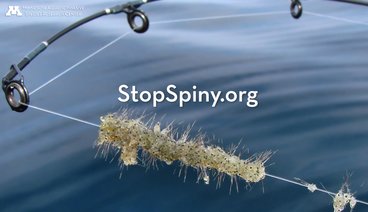
U of M Research shows how to help stop the spread of spiny water fleas in Minnesota lakes
ST. PAUL — Based on new research, the Minnesota Aquatic Invasive Species Research Center is asking anglers to wipe fishing lines, reels, bait buckets, and livewells in addition to draining all water from boats and equipment when leaving a spiny water flea-invaded lake in order to “Stop Spiny.”
Spiny water fleas, though tiny (roughly the size of a grain of rice) can cause big problems for Minnesota lakes. These invasive zooplankton eat the microscopic food young, native fish need to survive and grow. Previous MAISRC research conducted by Dr. Gretchen Hansen has shown that walleye in lakes invaded by spiny water fleas are smaller and less abundant than walleye in uninvaded lakes. Stopping the spread of spiny water fleas is a crucial step in protecting our lakes; however, until recently, there was little information available on what recreational equipment was likely to collect spiny water fleas on it during use.
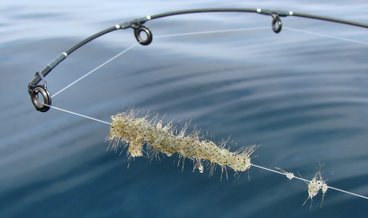
U of M research shows how to help stop the spread of spiny waterfleas in Minnesota lakes
Based on new research, the Minnesota Aquatic Invasive Species Research Center is asking anglers to wipe fishing lines, reels, bait buckets, and livewells in addition to draining all water from boats and equipment when leaving a spiny waterflea-invaded lake in order to ‘Stop Spiny.’
Spiny waterfleas, though tiny (roughly the size of a grain of rice) can cause big problems for Minnesota lakes. These invasive zooplankton eat the microscopic food young, native fish need to survive and grow. Previous MAISRC research conducted by Gretchen Hansen has shown that walleye in lakes invaded by spiny waterfleas are smaller and less abundant than walleye in uninvaded lakes. Stopping the spread of spiny waterfleas is a crucial step in protecting our lakes; however, until recently, there was little information available on what recreational equipment was likely to collect spiny waterfleas on it during use.
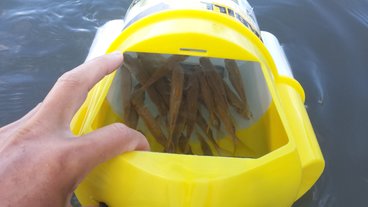
Researchers Call Attention to Preventing Spread of Aquatic Invasive Species Ahead of Minnesota’s Fishing Opener
(KNSI) – Minnesota’s fishing season opens this Saturday, and as Minnesotans get out on the water, researchers from the University of Minnesota are drawing attention to aquatic invasive species. Dr. Nick Phelps, director of the Minnesota Aquatic Invasive Species Research Center, says one species of concern is the zebra mussel.
“Zebra mussels are one of the most problematic species here in the [United] States,” Phelps said. “They showed up in Minnesota in the late 1980s, and at this point, we have about 280 lakes or so that are currently infested.”
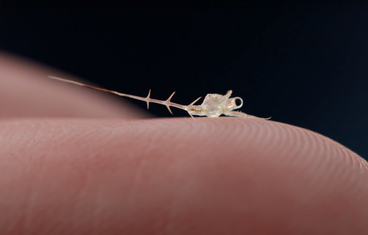
New research from U of M shows how to help stop the spread of spiny water fleas in Minnesota lakes
FOR IMMEDIATE RELEASE
ST. PAUL, Minn. — Based on new research, the Minnesota Aquatic Invasive Species Research Center is asking anglers to wipe fishing lines, reels, bait buckets, and livewells in addition to draining all water from boats and equipment when leaving a spiny water flea-invaded lake in order to ‘Stop Spiny.’
Spiny water fleas, though tiny (roughly the size of a grain of rice) can cause big problems for Minnesota lakes. These invasive zooplankton eat the microscopic food young, native fish need to survive and grow. Previous MAISRC research conducted by Dr. Gretchen Hansen has shown that walleye in lakes invaded by spiny water fleas are smaller and less abundant than walleye in uninvaded lakes. Stopping the spread of spiny water fleas is a crucial step in protecting our lakes; however, until recently, there was little information available on what recreational equipment was likely to collect spiny water fleas on it during use.

Talking aquatic invasive species with the U of M
Minnesota’s walleye, bass, northern pike, and lake trout fishing opener is next weekend, and aquatic invasive species (AIS) will be on many people’s minds.
2021 not only brought us a new way of life with guidelines surrounding COVID-19, but the Minnesota Aquatic Invasive Species Research Center at the University of Minnesota has also created us a new resource — an online dashboard called AIS Explorer— that predicts the introduction risk of aquatic invasive species and identifies the optimal placement of watercraft inspection locations for waterbodies across Minnesota.
Amy Kinsley, an assistant professor in the College of Veterinary Medicine at the University of Minnesota, answers questions on what the latest research on AIS shows, what boaters and anglers alike can do to stop the spread of AIS, as well as the new AIS Explorer dashboard.
Q: What aquatic invasive species are in Minnesota, and are there any new ones of great concern?
Dr. Kinsley: “Aquatic invasive species (AIS) are non-native aquatic animals, pathogens or plants that have been introduced to a new environment, beyond where they are typically found. Depending
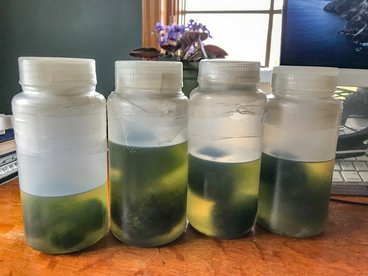
Investigation launched for moss balls, zebra mussels
The Minnesota Aquatic Invasive Species Research Center (MAISRC) has launched a rapid response project to conduct genetic testing on zebra mussels that were inadvertently distributed across the United States and Canada hiding within aquarium moss balls and sold at pet stores, including in Minnesota.
MAISRC is partnering with the University of Minnesota Genomics Center (UMGC) to conduct the testing at the University’s Twin Cities campus.
MAISRC Director and Research Fellow Dr. Nicholas Phelps is managing the rapid response project.
“We are sequencing the genetic markers from the moss ball zebra mussels to determine their origins and to build a database that can be used for future comparisons. That way, if any new lakes become infested with zebra mussels in Minnesota over the next few years, we may be able to genetically link those populations,” explained Phelps. “Was the new lake infested from a neighboring infested lake, or was it from the release of these moss ball zebra mussels? By conducting this genetic testing now, we’ll be able to know.”

Minnesota Pet store moss balls may carry invasive species
Yes, moss balls are a real thing. And it's possible zebra mussels aren't just traveling by boat anymore, they may have moved into Minnesota pet stores.
Why is it NOT good? For that let's take a quick look at what the United States Geological Survey (USGS) says...
Zebra mussels are an invasive, fingernail-sized mollusk...(they) probably arrived in the Great Lakes in the 1980s via ballast water that was discharged by large ships from Europe. They have spread rapidly...(they) ...filter out algae that native species need for food and they attach to--and incapacitate--native mussels. Power plants must also spend millions of dollars removing zebra mussels from clogged water intakes.
The long and the short of it is we don't want these...and if they're being spread via pet store moss balls, the problem will just keep getting bigger because of a lot of us have fish tanks.

University of Minnesota Rapid Response Project to Test Zebra Mussels Found in Pet Stores Across U.S. and Canada
The Minnesota Aquatic Invasive Species Research Center (MAISRC) has launched a rapid response project to conduct genetic testing on zebra mussels that were inadvertently distributed across the United States and Canada hiding within aquarium moss balls and sold at pet stores—including in Minnesota. MAISRC is partnering with the University of Minnesota Genomics Center (UMGC) to conduct the testing at the UMN’s Twin Cities campus.

Spiny waterfleas – tiny zooplankton with a big impact
Who really cares about a predatory zooplankton that can barely be seen with the naked eye?
Fishermen might care when gelatinous blobs stick to their fishing poles and prevent them from landing a fish or their catch is lacking.
SPINY WATERFLEAS
Spiny waterfleas are a zooplankton (crustaceans, not insects), that live in open water.
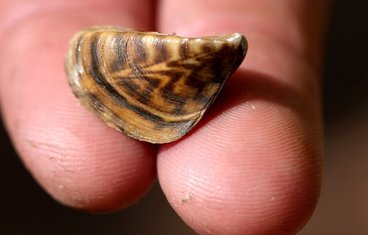
Zebra mussel research project coming to Pelican Lake
BREEZY POINT — The Minnesota Aquatic Invasive Species Research Center, the United States Geological Survey and their partners are hosting a virtual meeting 7-8 p.m. Tuesday, March 23, to provide information to Pelican Lake community members about the upcoming zebra mussel suppression project this summer.
During the first half of the meeting, researchers will provide an overview of the upcoming project and the work that has led up to this point. The second half of the hour will be open to questions from the public.
Anyone who lives on, near or uses Pelican Lake is welcome to attend the open house. To attend the meeting, community members are encouraged to register via Eventbrite.
